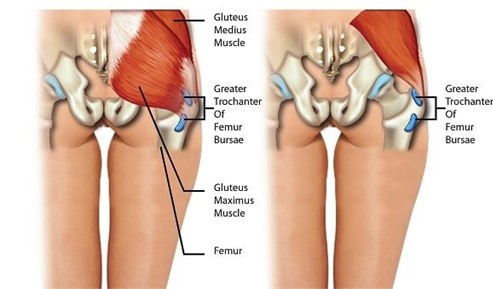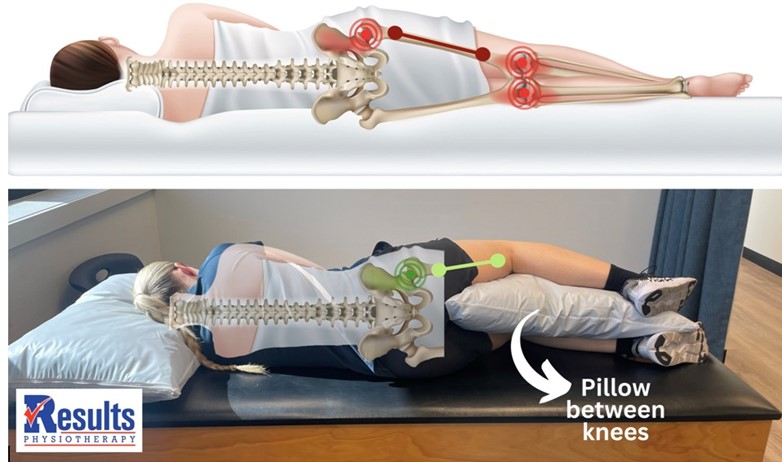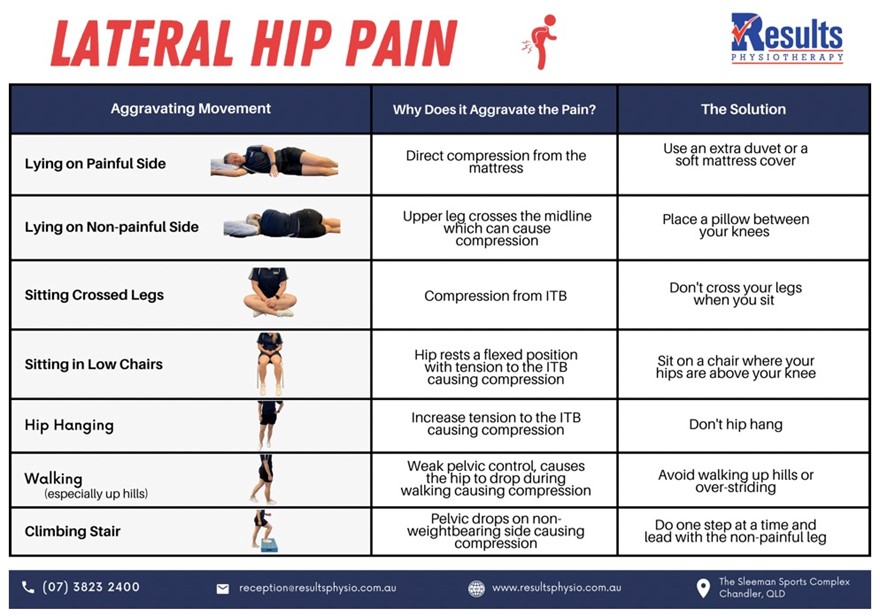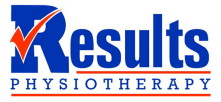Tips to relieve Hip Bursitis (Lateral Hip Pain)
HIP HIP hooray – Results Physiotherapy has the answers about my hip pain
Lateral hip pain (AKA Hip Bursitis or pain at the side of the hip) is an injury which can affect individuals from all walks of life. Most commonly, it affects females over the age of 40, but also affects younger runners, new mothers, office workers and the general public – lateral hip pain is common!
What is it?
Lateral hip pain is clinically referred to as Greater Trochanteric Pain Syndrome (GTPS) which includes trochanteric/hip bursitis and gluteus medius/minimus tendinopathies or tendon tears. Clinically isolated hip bursitis (inflammation of the bursa/fluid filled sac) is very uncommon thus came the term GTPS. This is because there is often a co-existence of bursitis, gluteal tendinopathy and potentially degenerative gluteal tears.

What causes it? What are the contributing factors?
- Reduced strength and flexibility of the muscles/tendons around the hip and buttock
- Poor lumbo-pelvic stability
- Inactive lifestyle which causes weakness in the buttock muscles
- A sudden increase in load such as “hanging off hip” for new mum’s, running or walking
- Being overweight
- Postural habits and positioning (standing or sitting), for e.g: crossing legs when sitting, hanging on hip in standing, poor walking pattern, sitting for long periods, certain sleeping positions.
What are the symptoms?
Most patients complain of pain over the outermost aspect of the thigh/hip that is exacerbated by prolonged sitting, climbing stairs, high impact physical activities or lying over the affected area. Other symptoms include
• Morning stiffness
• Pain referring further down the outside of the thigh.
• Symptoms that improve during warm up of activity (usually within the first 5-10mins) but will increase over following 24-48hrs post activity
How does physio help?
Here at Results Physiotherapy we will help you by diagnosing your condition and providing pain relief and strength rehabilitation through such treatments as:
- Manual therapy
- Education and load/activity modification
- Exercise therapy and individualised rehab program
This aims to reduce excessive loading (compression) to your tendons, then increase your tendon’s capacity for load so that you can return to all previously painful activities. Finally, we will create a collaborative plan for ongoing maintenance to ensure you stay pain free!
What to do for the meantime?
To ensure a long term resolution to this injury, an tailored rehabilitation program from your physio is vital. In addition, you can try reducing further aggravation to the hip. This includes limiting (where possible) the following: stair climbing, prolonged sitting, cross legged sitting and any other activities that worsen your pain. Try sleeping on your unaffected side with a pillow between your knees. This will put your hip in a better position!

See the list of other aggravating factors to how to avoid them below:





